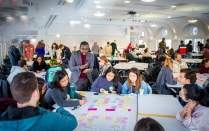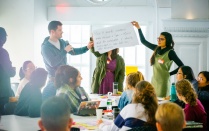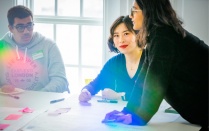Global Innovation Challenge: 2020
Communicating Science in a Complex World
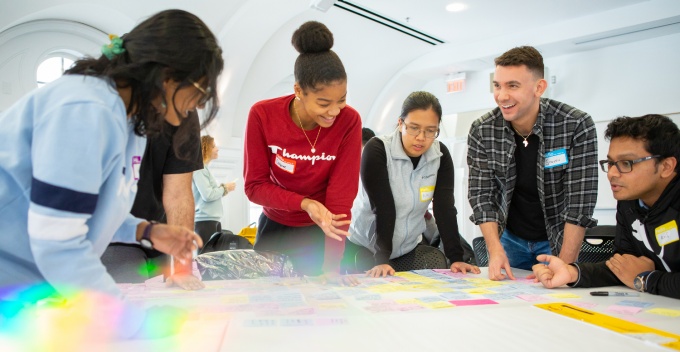
The 2020 Global Innovation Challenge focused on how we communicate complex issues, like how, and with whom, should we share new genetic and genomic research and information, how we reveal the hidden dangers of pollutants in our food, homes, and neighborhoods, and how we ethically persuade people to heed warnings of imminent threats, such as epidemics and extreme weather events. Communicating these complex issues, while separating fact from fiction, is challenging. Cultural differences, literacy levels, political motivations, and new media platforms complicate this further. The public is uncertain whom and what to believe.
The 2020 GIC was co-organized by the Community for Global Health Equity, faculty fellows Drs. Katarzyna Kordas and Jennifer Surtees, Blackstone Launchpad, and UB Sustainability.



In the News
Background
In 1953, Francis Crick and James Watson, building on the work of Rosalind Franklin, described the double helical structure of a DNA molecule, a finding that gave rise to modern molecular biology and deeply influenced art and culture. In 1978, lead, a substance known to have adverse health effects since the second century BCE, was banned in the United States as an additive to household paint. In 2006, Al Gore, hoping to alert the public to the planetary emergency of global warming, released An Inconvenient Truth, a $50 million-grossing book and documentary. These issues – genetics, chemical exposure, and climate change – affect human health in important ways, but they are complex to understand and communicate.
Since the monumental discovery of the double helix, public and private institutions have sought to advance and capitalize on our growing understanding of genomics. Now, an individual can obtain information about their ancestry, health, and traits by simply spitting in a tube and mailing it away. Yet, many health care providers lack resources to provide genetic-based health services and education to their patients, as approximately 50% of the public reports little or no understanding of the term “human genome.”
In parallel, there are 180,000 chemicals produced or imported into the U.S. each year. Only a handful of those have been studied, but there is increasing evidence that chemicals in daily-use products such as baby bottles, baby pajamas, and car seats may be harmful to children’s growth and development. The companies making, marketing, and selling products have much at stake, as does the public. Many individuals remain unsure: what information and whom do I trust?
In addition, from the 1820’s to the present, despite scientific evidence, the world continues to debate the impacts of climate change without taking action. In 2015, for the first time, all members of the United Nations convened at the Framework Convention on Climate Change to strengthen the global response. Yet, the influence of politics and an emphasis on economic factors have delayed progress, especially in the United States.
Advances in research around genomics, chemical exposures, and global climate change have far-reaching effects on the health and wellbeing of the planet and its people. Communicating this information in an effective and meaningful manner, however, remains a challenge. Cultural differences, political motivations, and new media platforms all contribute to the complexity surrounding already complex issues affecting human health. The question remains: how can important research findings be communicated to people of different ages, different cultures, and different levels of education in order for them to make decisions and take action?
Develop strategies to communicate complex health information to people across ages, cultures, and geographies
Dr. Emmanuel Frimpong Boahmah talks with one of the teams from this years challenge.
Seth Frndak and Nadia Koyratty present a work-in-progress idea on behalf of their team at the challenge.
Student team discusses project at the challenge. Teams are interdisciplinary and form based-off of curiosity and interest.
Program Materials
1968…octo-indsutry man!, James Vaughan, 2013, CC BY-NC-SA 2.0
The Oxford Dictionary of the English Language chose “post-truth” as its word of the year for 2016. In a post-truth, post-fact world, views that appeal to emotions and personal beliefs are more influential than objective evidence-based facts.
What does this mean for public trust in the evidence produced by science, medicine, and public health?
– Dr. Margaret Chan, Director General of the World Health Organization, 2006-2017
LIGHT Fellows
The Global Innovation Challenge (GIC) is an international event. We aim to further enrich the planning and delivery of the GIC through the involvement of four international students-from both health science and non-health science disciplines (e.g., engineering)-selected to serve as Local-International Global Health Talent (LIGHT) Fellows.
Meet our LIGHT Fellows:
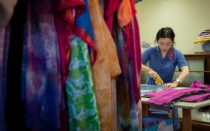

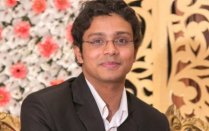
Xingyu Chen: Working toward her PhD in Global Gender Studies in the Department of Global Gender and Sexuality Studies, Xingyu Chen's studies focus on military conflicts and their impact on fertility in Asia. Wei is the co-founder and vice-president of UB Group of International Graduate Students. Originally from China, she is passionate about initiating a peer-to-peer network to bridge the gap between the international student community and the rest of UB.
Prathanashree Chhetri: An undergraduate student working toward her degree in Public Health, Ana is focused on finding innovative solutions to assist underresourced communities. Originally from Nepal, Ana lived through the 2015 earthquake, volunteering her time to teach and serve the local community.
Asif Imran: Asif is working toward a PhD in Computer Science and Engineering. He has used his software engineering skills to build health service applications to assist people from Bangladesh, where he is originally from. Asif hopes to one day design an effective disaster management software to ensure effective communication for populations that suffer from natural disasters.
Wei Luo: With a background in data driven approaches to solve health research problems, Wei is eager to help students collect, analyze, and visualize data to develop evidence-based strategies that promote global health equity. Originally from China, Wei is working toward a PhD in medical sociology and has a keen interest in developing ties with people across multiple disciplines.
Experts
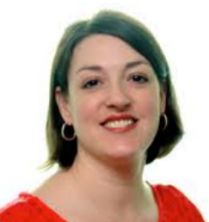
Julie Sweetland is a sociolinguist and serves as a Senior Advisor at the FrameWorks Institute, where she leads efforts to diffuse the organization’s cutting-edge, evidence-based reframing recommendations throughout the nonprofit sector. Since joining FrameWorks in 2012, she has led the development of powerful learning experiences for nonprofit leaders and has provided strategic communications guidance for advocates, policymakers, and scientists nationwide and internationally. Prior to joining FrameWorks, Julie was actively involved in improving teaching and learning for over a decade as a classroom teacher, instructional designer, and teacher educator. At Center for Inspired Teaching, she served as director of teaching and learning and helped to found a demonstration school with an embedded teacher residency. As founding director of the Center for Urban Education, she launched a graduate teacher preparation program for the University of the District of Columbia. Julie's linguistic research has focused on the intersection of language and race; on the role of language variation and language attitudes on student learning; and on effective professional learning for teachers. Her work has appeared in publications such as the Journal of Sociolinguistics, Educational Researcher, and Education Week, and she is the co-author of African American, Creole, and Other Vernacular Englishes in Education. She is a graduate of Georgetown University and lectures regularly at her alma mater. She completed her MA and PhD in linguistics at Stanford University.
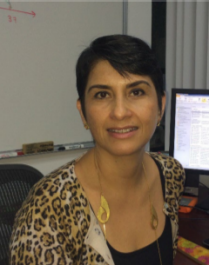
Martha M. Téllez-Rojo obtained a Ph.D. in Epidemiology from the National Institute of Public Health (NIPH) in Mexico (2003). She is a senior researcher (ICM-F) at the NIPH. Her main focus of research is the effects of environmental exposures on children's health. Since 2003, she has been the principal investigator from the Mexico site of the ELEMENT (Early Live Exposure in Mexico to Environmental Toxicants project) and PROGRESS (Program Research in Obesity, Growth, Environment and Social Stressors) birth cohorts, both mainly funded by the NIH. Dr. Téllez-Rojo has also been very active designing, conducting and analyzing several projects on program evaluation of social interventions. Among the most important projects, she has participated is the impact evaluation of the health component of Oportunidades, the main anti-poverty program in México. She also participated in the impact evaluation of Seguro Popular, a programme aimed to deliver health insurance, regular and preventive care, medicines and health facilities to more than 50 million Mexicans through a randomly assigned treatment within matched pairs of health clusters. She was the principal investigator of the impact evaluation of 70 y más, the federal antipoverty program for the elderly population that used a quasi-experimental design with a two-way discontinuity regression design. In recent years, she has conducted several national surveys on health-related topics, including the National Survey of Addictions in collaboration with the National Institute of Psychiatry in 2011, and the 2nd National Survey of Exclusion, Intolerance and Violence in High schools conducted under the request of the Ministry of Education 2009.
Faculty Fellows
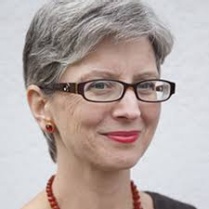
Dr. Kasia Kordas, Associate Professor, Epidemiology and Environmental Health, University at Buffalo
Several aspects of environmental epidemiology keep Dr. Kasia Kordas fascinated and wanting to know more. For example, environmental exposures do not occur in isolation - most often, humans are exposed to multiple chemicals so over time. Her research, having evolved from studying lead to studying multiple metals, focuses on exposures even more broadly, for example understanding the effects of the totality of such exposures on children's health. Because environmental exposures occur in a broader context, whether it be family, school or community, Dr. Kordas studies how intersection and interaction with environmental exposures affects child development. Additionally, environmental exposures interact with underlying biological vulnerabilities, such as genetic risks or nutritional deficiencies. By understanding these interactions, particularly with nutritional factors, researchers can use them to prevent or improve the effects of environmental exposures on children's health.
Dr. Kordas works predominantly in international settings, with her primary research site in Montevideo, Uruguay. Together with colleagues and excellent research team from the Catholic University of Uruguay and the University of the Republic of Uruguay, she has been developing a research program in pediatric environmental epidemiology since 2006. Currently, they are conducting a longitudinal study on the cognitive and behavioral effects of low-level exposure to multiple metals in school children.
In addition to her research, Dr. Kordas is Co-Director of UB's Community of Excellence in Global Health Equity.
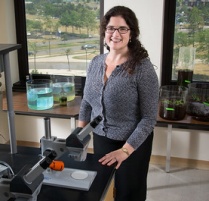
Dr. Jennifer Surtees, Associate Professor, Biochemistry, University at Buffalo
Associate professor in the Department of Biochemistry in the Jacobs School of Medicine and Biomedical Sciences at the University at Buffalo (SUNY), Jennifer Surtees' is interested in the general problem of maintaining genome stability. The genome is often referred to as the “instruction manual” for an organism. And therefore needs to be stably inherited in each of our cells to maintain a healthy, functional organism. Surtees' lab focuses on two distinct aspects of genome stability. 1) The roles and regulation of mismatch (MMR) proteins in multiple pathways that lead to DNA repair, or genome stability, and how this regulation is perverted to promote trinucleotide repeat expansions that cause neurodegenerative diseases such as Huntington’s disease. 2) The manner in which altered pools of dNTPS, the building blocks of DNA, impacts genome integrity - how misregulated dNTP levels affect cellular fitness and genome stability. By identifying pathways that make cells more sensitive or more resistant to DNA damaging agents when dNTP pools are altered, as they are in cancer cells, reserachers could enhance chemotherapy and/or provide insight into the acquisition of chemoresistance. Surtees' lab uses a combination of genetic, biochemical, bioinformatic and biophysical approaches to elucidate these pathways, using the yeast Saccharomyces cerevisiae as a model system.
In addition to the research described above, Dr. Surtees is co-founder and Co-director of UB’s Community of Excellence: Genome, Environment and Microbiome (GEM) (www.buffalo.edu/gem). GEM’s bipartite mission is to: 1) promote genome and microbiome scientific studies at UB and 2) promote genomic literacy at UB and in Western New York, particularly in the city of Buffalo (K-12 and adult populations), in both cases communicating complex information to diverse audiences. Through broad-based, multi-disciplinary efforts that engage the entire UB community, GEM has initiated and facilitated interdisciplinary and transdisciplinary (e.g. art and science, dance and science, science, history, public health, law and communications) research teams, established collaborations to develop innovative education programs and pedagogical techniques, developed curriculum at all levels to promote genomic literacy and encouraged development of performance art that incorporates genome and/or microbiome themes.

